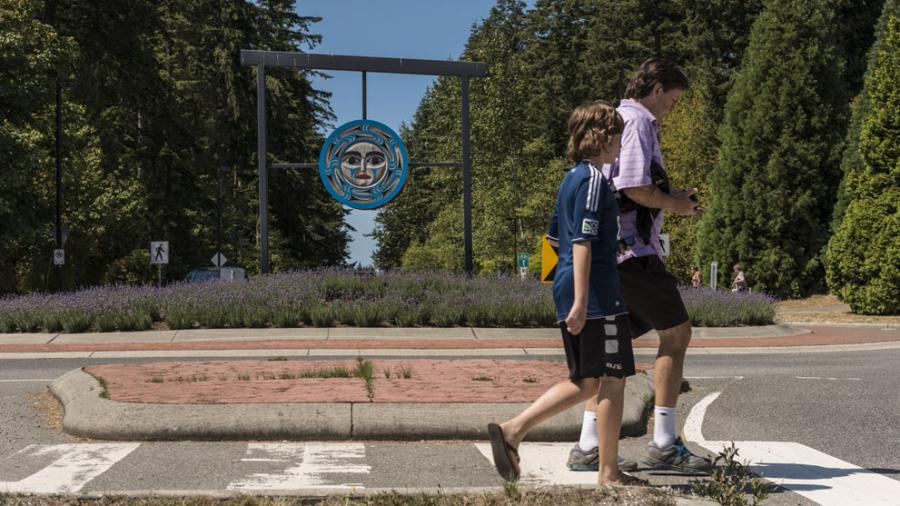Public Art Policy
Learn about Surrey's Public Art Policies and the Public Art Advisory Committee.

Vision
The City of Surrey’s Public Art Program creatively enhances public spaces through art installations that reflect Surrey’s heritage and diverse cultures.
The vision of Surrey’s Public Art Master Plan is to:
- Create a lively, beautiful, inclusive, sustainable, and complete community by integrating public artworks into the public realm (architecture, infrastructure, and landscape).
- Reflect community identity, values, cultural diversity, and Indigenous heritage through placemaking and showcasing a range of traditional, historic, and contemporary art practices.
- Develop and maintain a diverse and valued collection of artworks of varying scales, forms, and styles.
- Benefit from the creativity of Indigenous and non-Indigenous artists producing artwork within local, provincial, national, and international contexts.
Public art policy and funding
Investment in the City of Surrey’s public art projects is guided by its Public Art Policy (updated in 2018) with implementation informed by its Public Art Plan (2020-2029).
New public art projects are funded from contributions to the City public art reserve fund generated by the Private Development Public Art Program, as well as contributions from the City’s capital construction projects such as new civic facilities.
The Arts & Culture Committee is the advisory committee for public art.
Benefits of public art
Public art provides numerous economic, social, cultural, health, environmental and aesthetic benefits to residents and promotes the overall well-being of the community.
Social
- build social capital
- strengthen community cohesion
- increase neighbourhood attachment
- enhance or add a sense of place
- expand civic engagement
- encourage positive discourse
- make art accessible to all
- promote community values
- raise awareness on pertinent issues
- create supportive learning environments
- increase sense of safety
Cultural
- celebrate community identity
- enhance pride
- reflect cultural diversity and heritage
- documentation of histories
- strengthen mutual cultural understanding
Health
- improve mental health
- reduction isolation and stress
- promote sense of community
- amplify livability of neighbourhoods
- encourage movement, walkability, and active transportation
- strengthen well-being
- boost quality of life
Economic
- create attractive developments
- enhance land values
- amplify profile of properties
- increase desirability of location
- support creative industries
- promote tourism
- urban renewal
- generate opportunities for artists
Environmental
- enrich the natural environment
- promote sustainability
- maximize environmental functionality
- prevent bird strikes on windows
- conserve energy by create architectural designs
Aesthetic
- beautify urban landscapes
- creatively enhance infrastructure
- make spaces vibrant and enjoyable